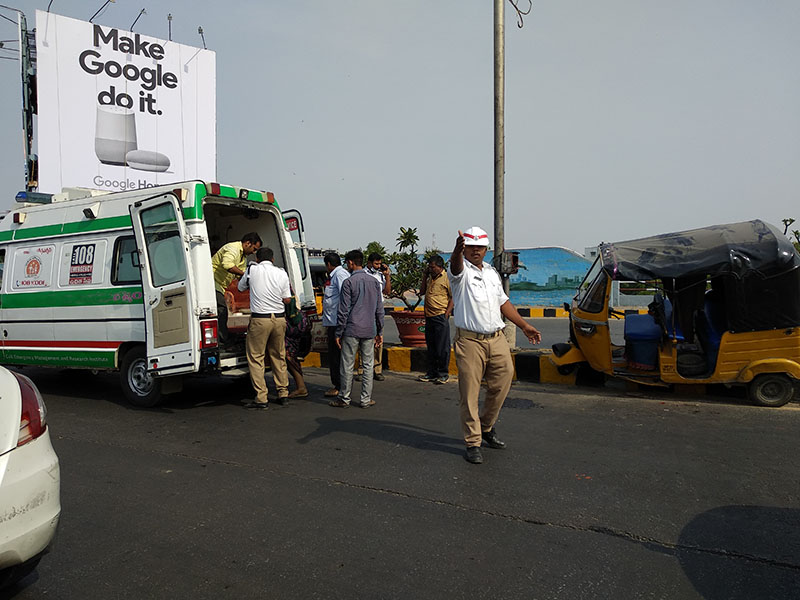Government to train ambulance drivers to provide first aid to road accident victims
To make the most of the golden hour period, the government will train ambulance drivers to provide basic first-aid to accident victims and pull out occupants from mangled vehicles with the use of cutting machines
 Image: Shutterstock
Image: Shutterstock
Union Minister for Road Transport and Highways Nitin Gadkari told Lok Sabha that 1.5 lakh people die in road accidents every year. Add to that, India holds the dubious record of the world's highest road casualties in a year.
Many of these fatalities could have been avoided if the victims received timely medical help, especially during the first hour, called the 'golden hour'. Sadly, this has not happened.
Thus, to make the most of the golden hour, the government will now train ambulance drivers to provide basic first-aid to accident victims and pull out occupants from mangled vehicles with the use of cutting machines.
Gadkari said, "1.5 lakh people are killed in road accidents every year. These many people don't die even in terrorist attacks."
"We will provide 203 ambulances in addition to the 300 we already have, which will be equipped with cutting tools. The driver will be trained to perform first-aid such as administering saline on the victims and also cutting open the vehicle (to pull out victims)," he added.
Accident victims often depend on private ambulances or vehicles to ferry them to the nearest hospital. Presently, these ambulances may or may not have doctors onboard to administer first-aid till they reach the hospital.
Without timely first aid, the accident victim risks loss of life during the crucial first hour. As per a 2018 report, ambulances with trained drivers will be stationed at 50 km intervals on the National Highways.
Published by Gadkari's Ministry, the report added that 4.64 lakh road accidents were recorded in 2017 (down 3.3 percent compared to 2016), which claimed 1.47 lakh lives and injured 4.70 lakh.
National Highways constitute two percent of India's total road network, but accounted for 30 percent of the accidents and 36 percent of deaths in 2017. Among vehicles, two-wheelers accounted for 34 percent of road accidents - the highest share.
Vehicle safety standards such as seat belt and anti-lock braking system among others have been tightened by the government.
Under the National Highway Accident Relief Service Scheme, state governments are provided cranes and ambulances and the National Highways Authority of India (NHAI) also provides ambulances at a distance of every 50 km on its completed stretches.
"Half of the people die on roads because road engineering is at fault, they have defective DPR (detailed project report). We identified 786 black spots and we have taken remedial measures on 300 of them. We promised to reduce accidents by 50 percent but we have achieved only 4-4.5 percent so far," added Gadkari.
Uttar Pradesh tops the list with little over 20,000 deaths reported in 2017, followed by Tamil Nadu with 16,157 deaths, and Maharashtra with 12,200 deaths during the same year.
Gadkari also mentioned that the minimum compensation awarded to accident victims has been raised in the Motor Vehicles (Amendment) Bill tabled in the Parliament. As per the existing law, accident victims stand to get about Rs 50,000 as compensation from insurance firms.
"The compensation awarded to accident victims was very low. In the new Bill, there is a provision to award a minimum of Rs 5 lakh within three months. Cashless treatment in the golden hour is also in the bill," Gadkari said.
Original Source: https://www.moneycontrol.com/news/technology/auto/government-to-train-ambulance-drivers-to-provide-first-aid-to-road-accident-victims-4230061.html